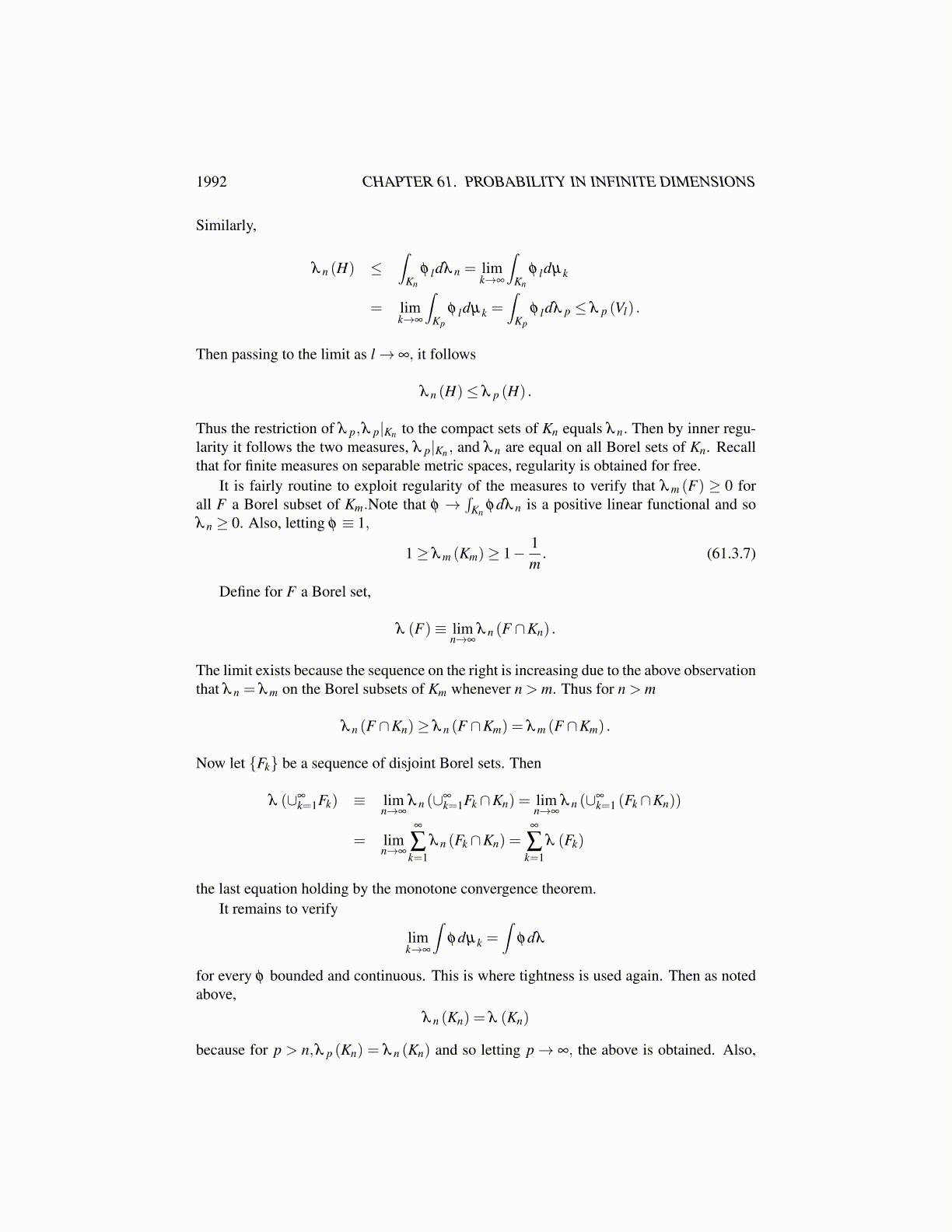
1992 CHAPTER 61. PROBABILITY IN INFINITE DIMENSIONS
Iij is contained in Ii−1
k for some k. Letting Ki ≡ ∪mij=1Ii
j, it follows Ki is a sequence ofnested compact sets. Let K = ∩∞
i=1Ki. Then each x ∈ K is the intersection of a unique
sequence of these closed intervals,{
Ikjk
}∞
k=1. Define θx ≡ ∩∞
k=1Hkjk. Since the diameters
of the H ij converge to 0 as i→ ∞, this function is well defined. It is continuous because
if xn → x, then ultimately xn and x are both in Ikjk, the kth closed interval in the sequence
whose intersection is x. Hence, d (θxn,θx)≤ diameter(Hkjk)≤ 1/k. To see the map is onto,
let h ∈ H. Then from the construction, there exists a sequence{
Hkjk
}∞
k=1of the above sets
whose intersection equals h. Then θ
(∩∞
i=1Ikjk
)= h.
Note θ is maybe not one to one.As an important corollary, it follows that the continuous functions defined on any com-
pact metric space is separable.
Corollary 61.3.4 Let H be a compact metric space and let C (H) denote the continuousfunctions defined on H with the usual norm,
|| f ||∞≡max{| f (x)| : x ∈ H}
Then C (H) is separable.
Proof: The proof is by contradiction. Suppose C (H) is not separable. Let Hk de-note a maximal collection of functions of C (H) with the property that if f ,g ∈Hk, then|| f −g||
∞≥ 1/k. The existence of such a maximal collection of functions is a consequence
of a simple use of the Hausdorff maximality theorem. Then ∪∞k=1Hk is dense. Therefore,
it cannot be countable by the assumption that C (H) is not separable. It follows that forsome k,Hk is uncountable. Now by Theorem 61.3.3 there exists a continuous function, θ
defined on a compact subset, K of [0,1] which maps K onto H. Now consider the functionsdefined on K
Gk ≡ { f ◦θ : f ∈Hk} .
Then Gk is an uncountable set of continuous functions defined on K with the propertythat the distance between any two of them is at least as large as 1/k. This contradictsseparability of C (K) which follows from the Weierstrass approximation theorem in whichthe separable countable set of functions is the restrictions of polynomials that involve onlyrational coefficients.
Now here is Prokhorov’s theorem.
Theorem 61.3.5 Let Λ= {µn}∞
n=1 be a sequence of probability measures defined on B (E)where E is a separable complete metric space. If Λ is tight then there exists a probabilitymeasure, λ and a subsequence of {µn}
∞
n=1 , still denoted by {µn}∞
n=1 such that whenever φ
is a continuous bounded complex valued function defined on E,
limn→∞
∫φdµn =
∫φdλ .